Aurender N20 Music Server/Streamer by Don Shaulis
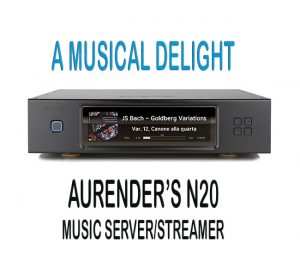
 Life has kicked me in the rear many times. When I was younger, I complained about how much my butt hurt. In retrospect, my mature self realizes that each boot moved me forward or at least in a different direction. Multiple kicks landed me in my now-adopted state of California, home to over thirty audio equipment manufacturers. Several are world-class builders—products from three of these grace my two audio systems. My audio experiences have taken a similar track. When my Dahlquist DQ-10s were stolen, I upgraded to Apogee. When my Quad ESL-2805s failed, I upgraded to Sound Labs (reviewed here). That boot was a blessing and a curse. I am absolutely thrilled with the performance of my Sound Labs, but they have me examining every other component and wire in my system for possible upgrades. When my Laufer-Teknik Memory Player failed for the last time, my evolved self said YES! and did a fist pump (a guilt-free excuse to upgrade). Thank you, life!
Life has kicked me in the rear many times. When I was younger, I complained about how much my butt hurt. In retrospect, my mature self realizes that each boot moved me forward or at least in a different direction. Multiple kicks landed me in my now-adopted state of California, home to over thirty audio equipment manufacturers. Several are world-class builders—products from three of these grace my two audio systems. My audio experiences have taken a similar track. When my Dahlquist DQ-10s were stolen, I upgraded to Apogee. When my Quad ESL-2805s failed, I upgraded to Sound Labs (reviewed here). That boot was a blessing and a curse. I am absolutely thrilled with the performance of my Sound Labs, but they have me examining every other component and wire in my system for possible upgrades. When my Laufer-Teknik Memory Player failed for the last time, my evolved self said YES! and did a fist pump (a guilt-free excuse to upgrade). Thank you, life!
After using Memory Players exclusively since their debut in 2006, I entered a brave new world searching for a replacement. Opportunities for music servers had exploded in the ensuing 16 years. Daunted by the task, I listed significant players with consistent, proven products and service reflected in sales volume and brand reputation.
Next, I needed to determine what outputs I wanted. I found USB to be ubiquitous but not universal in the quality of implementation. Surprisingly, at least one company rated USB as their lowest-ranked output. I do not mean to disparage USBs in general. I am pointing out that USB itself is not a guarantee of superiority. Since AES/EBU is a preferred input for my Bricasti M3 DAC and I already had top-quality AES/EBU cables, I focused on units with no internal DAC but provided AES/EBU as a high-quality output option. Most of my digital music was from ripped CDs, so AES/EBU with sample rates up to 192kHz was more than adequate. I further eliminated choices based on the usual criteria of size and cost. The list got very small quickly. Aurender became the clear winner for me.
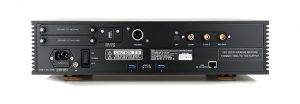
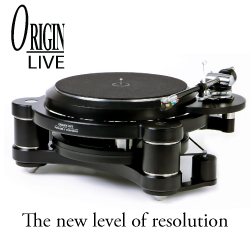 My choice of AES/EBU output was validated by information from the Aurender Quick Start Guide, which states the S/PDIF output section is controlled by an extremely precise Oven-Controlled Crystal Oscillator (OCXO) clock. The Guide suggested that in many cases, a DAC may sound better when connected to one of these outputs than USB, even though the Aurender USB output is isolated. Many manufacturers treat S/PDIF outputs as secondary and USB as primary. The DAC clock matters most for USB, while the transport clock governs S/PDIF (which includes AES/EBU). That is why Aurender’s OCXO clock-controlled AES/EBU was my best choice. But that does not mean Aurender ignores USB. Aurender’s dedicated USB Audio output is physically and electrically isolated from the CPU board to minimize noise and could be the perfect pairing for the right DAC.
My choice of AES/EBU output was validated by information from the Aurender Quick Start Guide, which states the S/PDIF output section is controlled by an extremely precise Oven-Controlled Crystal Oscillator (OCXO) clock. The Guide suggested that in many cases, a DAC may sound better when connected to one of these outputs than USB, even though the Aurender USB output is isolated. Many manufacturers treat S/PDIF outputs as secondary and USB as primary. The DAC clock matters most for USB, while the transport clock governs S/PDIF (which includes AES/EBU). That is why Aurender’s OCXO clock-controlled AES/EBU was my best choice. But that does not mean Aurender ignores USB. Aurender’s dedicated USB Audio output is physically and electrically isolated from the CPU board to minimize noise and could be the perfect pairing for the right DAC.

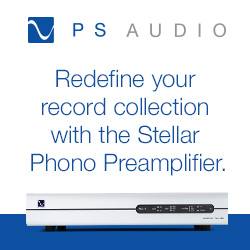 Looking at the various Aurender offerings, I decided the N20 was a good compromise between performance and cost. I like to stretch my audio budget to where I feel I get a lot of the manufacturer’s technology trickled down to an attractive price. In the Aurender line, the N20 has half the boxes of the N30 and is half the price. Meanwhile, the N20 includes almost the same hardware features and benefits.
Looking at the various Aurender offerings, I decided the N20 was a good compromise between performance and cost. I like to stretch my audio budget to where I feel I get a lot of the manufacturer’s technology trickled down to an attractive price. In the Aurender line, the N20 has half the boxes of the N30 and is half the price. Meanwhile, the N20 includes almost the same hardware features and benefits.
After using JRiver on a Memory Player controlled via computer and a remote access application (e.g., Tight VNC) for a decade and a half, I had some adjustments to make using the dedicated Aurender app, Conductor. The Conductor is not a PC application. It requires an Apple or Android device. I use an iPad. I am not a gadget or tech-oriented person. I have a love/hate relationship with my Android smartphone. I’m not too fond of technology that offers so many options that I can’t do what I need to do. The Conductor app gives me just what I need. When I say Conductor on an iPad is fun, consider that practically shouting. JRiver remotely controlled via a Windows PC worked adequately, but I frequently had annoying connection issues and never would call it fun.
Aurender playback and control software is developed in the same building as its hardware to allow superior integration of the two. The results are apparent. The Conductor app is intuitive and slickly implemented. It creates a “queue.” Tapping on a track sends it to the end of the queue. Pressing and holding opens a window with options:
- Play now, random.
- Replace queue.
- Add to next.
- Add to the end.
- Create a new playlist.
- Add to playlist.
That process can also expand the album cover on your tablet. Creating and editing playlists is easy. The playlist editor is another useful function. It allows deleting or reordering tracks. Music files can be searched in multiple ways: song, artist, album, genre, composer, conductor, or folder. The only downside I have found is my heavy hand on the iPad. Sometimes when I only want to scroll, I accidentally pop a track onto the end of the queue.
Loading my files onto the Aurender using the Smart Copy application was easy. My files were in a unique W64 format used by Laufer-Teknik Memory Players. Those had to be converted to WAV files using an external program and computer. That, and the fact that CDs had been copied using various software over a decade and a half, left some metadata damaged. I had yet to create playlists with JRiver. I created separate folders. Typically they were used to burn demo CDs for audio shows. Loading those to the Aurender resulted in duplicate listings and the wrong (rarely) or missing (more common) album art. Most users would be starting from a much better place than I did. Still, in the end, the Conductor app is a significant step forward from what I was using. Aurender customer service was invaluable during my transition. Aurender USA customer service is outstanding. Multiple options are available to customers: live (telephone), remote access, email, and online via how-to guides and FAQs.
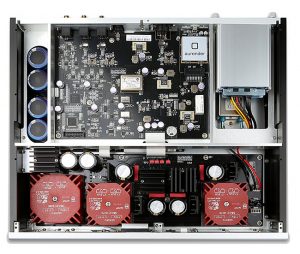
The N20 does not contain any pre-installed storage. Instead, it has two trays for users to install up to two 8TB HDDs or SSDs. The trays open from the back via thumbscrews and hold a 2.5” drive. I like that feature because manufacturers typically overcharge for pre-installed storage, and the customer has to decide what to do at the time of purchase. They are faced with the dilemma of buying too much or not enough. Two easily swapped drives also make it easy to create backup drives. Using Aurender’s internal storage is optimal, but the USB 3.0 data ports allow connection to external USB drives and NAS.
The N20 uses two separate power supplies. A hybrid power supply powers the digital audio output board. A linear power supply with integrated UPS supplies non-audio adjacent components like the display. Aurender uses a solid-state memory cache for playback instead of a buffer system used by many other manufacturers.
Although the N20 has an 8.8” full-color IPS LCD for album art, artist name, song title, and playback information, I turned it off and listened in what Aurender calls Critical Listening Mode (CLM). CLM defeats the LCD, control buttons, and all background computing activity that is not essential for playing music. I did not spend a lot of energy comparing the two modes. I trusted Aurender’s claim that CLM was better and did not need the display. My equipment rack is on a side wall, so my visual focus is elsewhere. I am focused forward or on my iPad. The display does light up during start-up and shut down to allow the user to see what is happening.
Shutdown can be accomplished from the front panel or tablet, but following instructions is critical. Using my iPad is the most convenient. I pressed and held the “play” button in the Aurender Conductor app and chose “Turn off” from the pop-up menu. The other menu option is “Restart.”
Aurenders do not have WiFi access. That design omission is to reduce noise. The Ethernet port circuit has two transformers for superior noise filtration. If an Ethernet connection is unavailable, users must create one via a WiFi extender with an Ethernet port. Ethernet-over-powerline adapters can also be used. Another option is a USB WiFi adapter to create a standalone Aurender LAN. Although with that application, internet access for streaming, updates, or remote support will not be available. I had previously installed two Ethernet lines in my listening room, so I was good to go when my Aurender was delivered two days after placing my order.

I have yet to dip into the area of streaming, but it is comforting to know the N20 has me covered for the future with integrated access to TIDAL, Qobuz, Spotify Connect, and AirPlay. Internet radio is included via SHOUTcast. SHOUTcast provides sorting tabs for recommended, genre, favorites, search, and, for the truly adventuresome or bored, top 500 stations. SHOUTcast was easy to navigate, so I explored and listened to my favorite station, Radio Paradise.
Listening Impressions:
In addition to the equipment already mentioned, music was enjoyed through a VAC Sigma 170i (integrated) or Pass Labs XP-22 into Benchmark Media Systems AHB2 monoblocks. (reviewed here). Speaker cables and 5.5M XLR interconnects were Cardas Clear Beyond.
A music server being almost the start of the food chain makes it hard to compare servers unless a person has more than one on hand and swaps them out without changing the downstream equipment. But that also creates a problem of compatibility. Changing one cable or the output type can make a difference. So, cutting to the bottom line, with the N20, my system is at its best. There are differences in the presentation between the SS Benchmarks and the tubed VAC, but each in my system sounds the best I have ever heard.
Unfortunately, the downside of improving my system has resulted in fewer and fewer CDs I enjoy listening to. The best recordings have improved, while the rest have gone the other way, with any recording failures unmasked. The N20 is no exception. It is faithful to the source and won’t make a poor recording magically better.
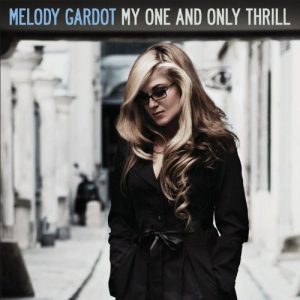 I am a picky listener. Much of Melody Gardot’s music is too “sleepy” for me. I prefer her more uptempo tracks. Her lighthearted faux complaint “Who Will Comfort Me” from her CD My One and Only Thrill [Universal Music Group ASIN: B001NESPHC] has a PRaT that has earned the track frequent play. The N20 has only enhanced my enjoyment. Especially noticeable to me was the absolute background silence when Melody sings acapella for a few lines before ending the song with a minute of scat and a playful laugh, like the entire song was tongue-in-cheek. The acapella portion always catches my interest, and I hang on to each word waiting for the next breath to be slowly released.
I am a picky listener. Much of Melody Gardot’s music is too “sleepy” for me. I prefer her more uptempo tracks. Her lighthearted faux complaint “Who Will Comfort Me” from her CD My One and Only Thrill [Universal Music Group ASIN: B001NESPHC] has a PRaT that has earned the track frequent play. The N20 has only enhanced my enjoyment. Especially noticeable to me was the absolute background silence when Melody sings acapella for a few lines before ending the song with a minute of scat and a playful laugh, like the entire song was tongue-in-cheek. The acapella portion always catches my interest, and I hang on to each word waiting for the next breath to be slowly released.
Synergy is often described as the whole being greater than the sum of its parts. That is the case with The Wailin’ Jennys. Heather Masse, Nicky Mehta, and Ruth Moody are each fine vocalists and musicians on their own, but together as the Wailin’ Jennys, the whole is indeed greater than the sum of its parts. To the three women, add in some hot sauce with Jeremy Penner on violin and mandolin. Their CD Live at the Mauch Chunk Opera House [Red House Records RHR CD 220] has become one of my favorite CDs.
Their cover of the traditional spiritual “Motherless Child” starts traditionally slow, somber, and acapella. Then upright bass, drums, bodhrán, and violin are added to pick up the tempo. There is a delicate layering of instruments and vocals with the three women alternating between solo, all three harmonizing together, or solo with two singing backup. The instrumental and vocal interplay keeps the song ever-changing despite the repetitive lyrics. The N20 preserved all the delicate nuances that make the live recording special.
Conclusion:
The Aurender N20 has brought a new level of performance and enjoyment to my Sound Lab audio system. The reliability and ease of use are a constant delight. I had not anticipated how much a new music server would increase my listening pleasure. Once again, life has punted me forward.
Those who find the N20 beyond their budget know that the more affordable Aurender products share the same excellent Conductor application and outstanding customer service. Aurender’s reputation is well deserved.

don shaulis
SPECIFICATIONS:
MSRP: $12,500
Inputs: 2 X USB 3.0, Double-Isolated Gigabit Ethernet, Word Clock (BNC)
Digital Outputs: Dedicated USB (2.0), OCXO Controlled: AES/EBU, RCA Coaxial, BNC, Optical,
Power Consumption: Play (40W), Peak (70W), Standby (3.5W)
Dimensions: 16.9″W x 14″W x 4.4″H (3.9″H)
Weight: 29.8 lb
Website: https://www.aurenderamerica.com/
Telephone: (888) 367-0840
Sales Support: esales@aurender.com
Technical Support: support@aurender.com
Don’s Associated Equipment
Source Component Wall:
Shunyata DENALI 6000/S v2 power conditioner
Shunyata SIGMA XC power cord
Shunyata ALPHA v2 NR power cords (2)
Audience Front Row power cord
Aurender N20 network transport
Bricasti Design M3 DAC/preamplifier
Pass Labs XP-22 preamplifier
Audience AES/EBU cable
Cardas Clear AES/EBU cable
Cardas Clear Beyond 5.5M XLR cables
Speaker Wall:
Audience aR6-TSSOX power conditioner
Au24 SE-i powerChord
Shunyata DELTA v2 NR power cords (2)
JPS Labs Aluminata power cords (2)
Cardas Clear Beyond speaker cables
Benchmark AHB2 monoblock amplifiers
Valve Amplification Company (VAC) Sigma 170i integrated amplifier
Sound Lab 545PX speakers
Accessories:
Symposium Svelte Plus isolation platforms
Homemade walnut butcher block amplifier stands
IsoAcoustic OREA Isolators
PolyCrystal cable elevators
Homemade walnut cable elevators
Homemade acoustic panels 2’X4’ (5)
Claro walnut equipment rack
One thought on "Aurender N20 Music Server/Streamer by Don Shaulis"
Leave a Reply
Stereo Times Masthead
Publisher/Founder
Clement Perry
Editor
Dave Thomas
Senior Editors
Frank Alles, Mike Girardi, Russell Lichter, Terry London, Moreno Mitchell, Paul Szabady, Bill Wells, Mike Wright, and Stephen Yan,
Current Contributors
David Abramson, Tim Barrall, Dave Allison, Ron Cook, Lewis Dardick, John Hoffman, Dan Secula, Don Shaulis, Greg Simmons, Eric Teh, Greg Voth, Richard Willie, Ed Van Winkle, Rob Dockery, Richard Doran, and Daveed Turek
Site Management Clement Perry
Ad Designer: Martin Perry






Great review Don. I’m in the market for a new server/streamer and Aurender is the direction I’m leaning right now.
Did you consider any other brands or models of Aurender before you decided on the N20?
Is there anything lacking with the N20 / M3 combo?
Thanks again for a fantastic review